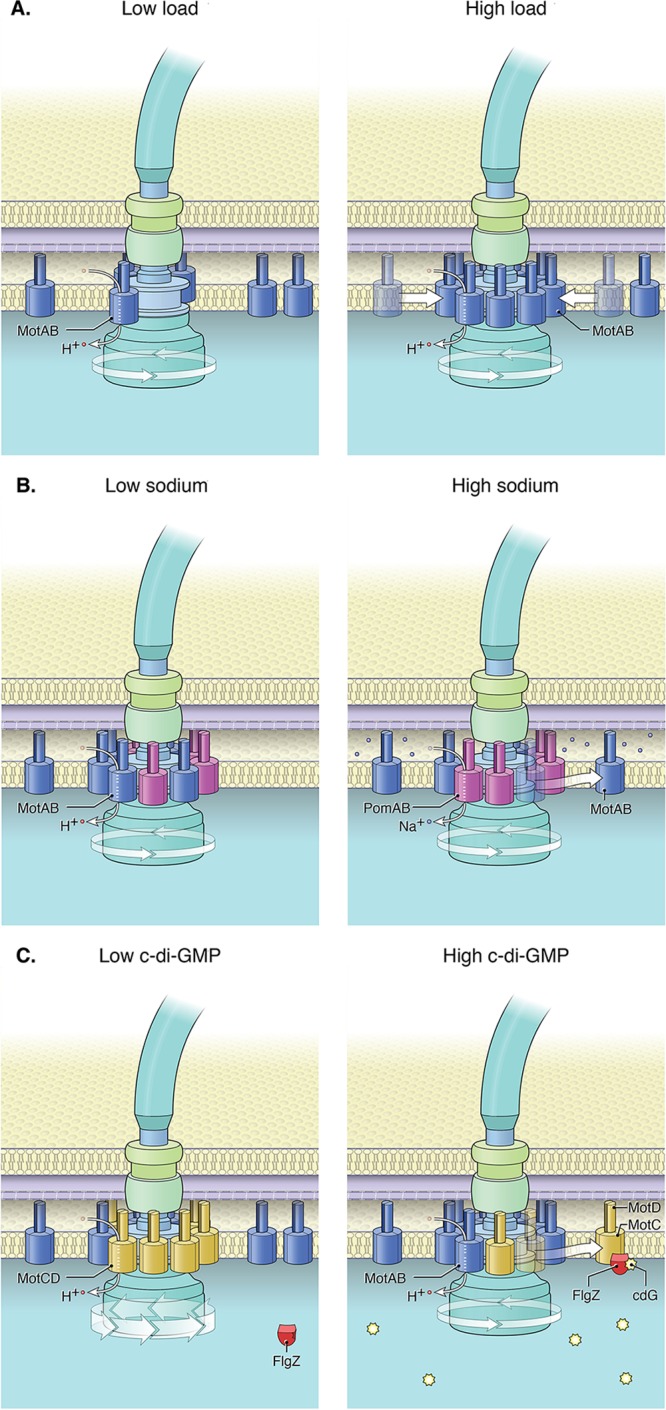FIG 2.

Models of stator dynamics. (A) Additional MotAB stators are incorporated into the motor as the mechanical load on the flagellum increases in E. coli (13, 14). (B) Some bacteria contain both proton-powered MotAB stators and sodium-powered PomAB stators. Work with S. oneidensis has demonstrated that the number of MotAB stators engaged in the motor decreases as the sodium concentration increases (30). (C) P. aeruginosa uses two proton-powered stator sets—MotAB and MotCD. Here we illustrate the current model suggesting that the ratio of the two stator complexes changes at different c-di-GMP levels. In this model, when levels of the signaling molecule c-di-GMP are low, there are increased levels of MotCD in the motor (50). When c-di-GMP levels are high, c-di-GMP (cdG) binds to FlgZ; when bound to c-di-GMP, FlgZ interacts with the MotC component of the MotCD stator complexes (51). We hypothesize that the c-di-GMP-dependent FlgZ-MotC interaction facilitates MotCD disengagement from the motor and decreases motor speed. Here, for ease of illustration, we show a flagellar motor that accommodates 10 stators, but the average number of each stator, as well as the total number of stators in the inner membrane, is unknown for most organisms. The arrow at the base of the motor indicates a motor complex capable of rotating the flagellum; the thicker line indicates the capability of generating relatively greater torque. Copyright, William Scavone; used with permission.
